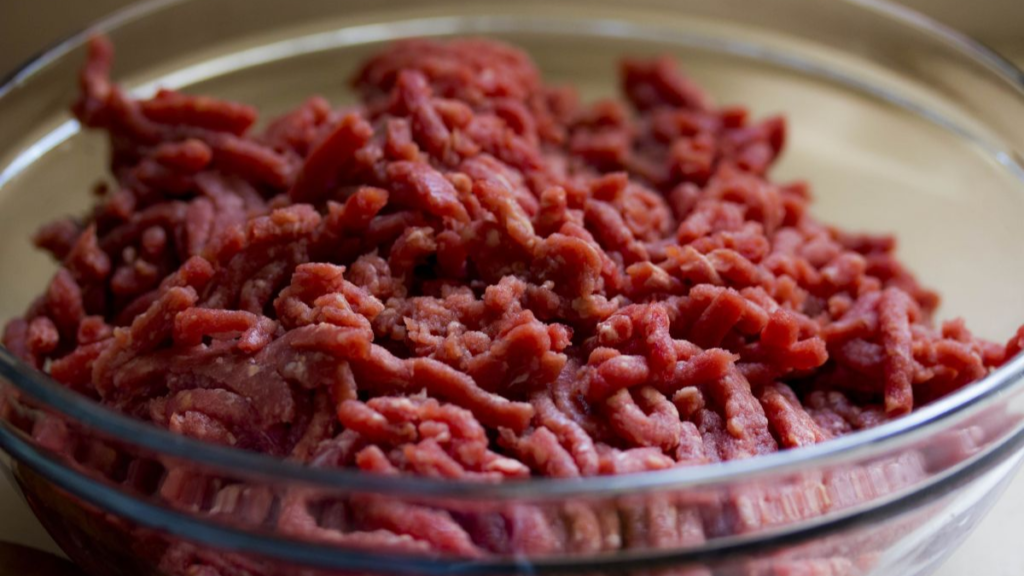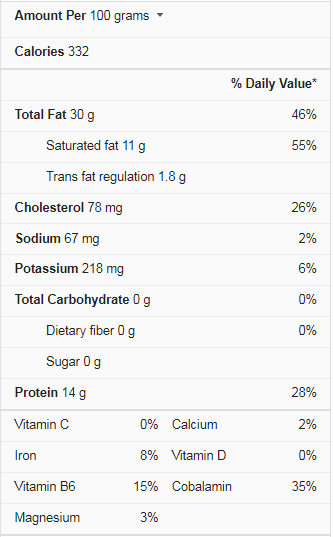There are common ways to tell if your ground beef has gone bad by the color and smell of the meat. When the meat is rotten, it has a slimy, sticky feel and smell, and the exterior is a light red to purplish-red color. The meat’s interior is usually gray or brown, and this does not mean that the meat is unusable.
Ground Beef Nutrition Facts
What Is Ground Beef?
Beef that has been finely chopped using a knife, a meat grinder, or a mincing machine is known as ground beef, minced beef, or beef mince. It’s used in various dishes, such as hamburgers and spaghetti bolognese. It’s not to be confused with mincemeat, which comprises chopped dried fruit, distilled spirits, spices, and historically (but now uncommon) minced/ground meat. Only skeletal muscles, muscle linked to bone, and no other meats, such as organs, make ground beef. Some stores sell ground round, sirloin, or chuck, and these labels indicate that only primal cuts or trim from those specified wholesale cuts are permitted.
Is Ground Meat Healthy To Eat?
Beef’s essential health benefits are derived from its high protein content, as well as its vitamins and minerals:
Helps Build Cells
Protein is required to maintain muscular tissue and a variety of biological activities that occur in your body daily. This macronutrient aids in the formation of bones, muscles, cartilage, skin, and blood in your body. 2 Beef contains selenium, which is required for DNA synthesis.
Boosts Immune System
Thiamin (B1), riboflavin (B2), niacin (B3), pyridoxine (B6), folate (B9), and cobalamin (B12) are all found in beef (B12). These B vitamins and the zinc contained in beef are essential for supporting a robust immune system. Because your body cannot store or synthesize B vitamins, you must obtain them from your diet.
Supports Hormone Production
Niacin, a B vitamin, also helps several physiological processes function correctly, including the generation of sex hormones. The mineral selenium is necessary for thyroid function.
Replenishes Iron Stores
The body requires iron for various tasks, including producing red blood cells. Dietary iron is contained in beef and other animal proteins in two forms: non-heme and heme. Because heme iron is easier for the body to utilize than non-heme iron, you don’t need to ingest it to help prevent anemia and other disorders caused by low iron.
How To Tell If Your Ground Beef Has Gone Bad?
Here are some easy ways to tell if your ground beef has gone wrong:
Check the color
Temperature, light, microbial development, and oxygen exposure are all factors that might cause the ground beef to change color. Because oxymyoglobin is created when a protein called myoglobin combines with oxygen, fresh, raw ground beef should be red. Due to a lack of oxygen, the interior of raw ground meat may be greyish brown, and this does not imply that the food has been spoiled.
However, if the outside of the ground beef has turned dark or grey, it is starting to rot and should be discarded.
Mold can also degrade cooked ground beef, so if you see any fuzzy blue, grey, or green patches on your leftovers, dump them.
Inspect the texture
A touch test is another approach to assess the quality of your ground beef. When you squeeze fresh ground beef, it should have a solid consistency that breaks apart. A slimy or sticky texture, whether cooked or raw, could indicate the presence of spoilage microorganisms, and it should be thrown away right away. After handling raw meat, wash your hands carefully to avoid transmitting bacteria from one surface to another.
Perform a smell test
This is arguably the most straightforward and quickest technique to see if meat has gone wrong. Raw and cooked ground beef is also affected. The smell of fresh ground beef is barely detectable, whereas decaying meat has a sour, sickening aroma. It’s no longer safe to eat once it’s gone wrong.
Increased proliferation of spoilage bacteria such as Lactobacillus spp. and Pseudomonas spp. It causes the aroma to change, which can also impact the flavor. Even if you don’t detect a strange odor but observe evidence of spoiling in color or texture, it’s still best to discard it because dangerous germs cannot be detected by smell.
Check the expiration date
Additional criteria for assessing whether your ground beef is good to include sell-by and expiration dates. A sell-by date indicates how long a product can be exhibited for sale, and ground beef can be refrigerated and eaten up to two days before expiration. Meanwhile, the expiration date — commonly known as the “best before” date — indicates when the product will begin to spoil. Before this date, the food will be at its finest in terms of taste and quality. Ground beef should not be eaten past its expiration date unless it has been frozen, in which case it can be kept for up to four months. When purchasing ground beef, make sure you read the product label carefully.
How To Safely Store Ground Beef?
Avoiding food contamination from ground beef requires careful handling and storage. Here are a few precautions to take:
- Purchase ground beef last and drive straight home from the supermarket to reduce the amount of time it is left unrefrigerated.
- Choose a chilly package to the touch and in good shape, free of holes or blemishes.
- Examine the meat’s color and expiration date.
- Keep raw meat separately in your cart to avoid cross-contamination or the spread of bacteria to other food items.
- Store its juices in a bag on the lowest shelf to keep its juices from leaking.
- Refrigerate frozen beef to keep it cool as it defrosts. Allow no more than 2 hours at room temperature.
- Refrigerate leftovers within two hours of cooking and use within three to four days.
Conclusion
The texture of the meat is also an important indicator. It should be firm and break apart easily when squeezed. If it is slimy or sticky, it may be infected with harmful bacteria. Although the bacteria are not dangerous, the odor of the meat is a clear sign that it has spoiled. You should not eat the meat if it is slimy or sticky. If the meat is too slimy, it may be rotten.



